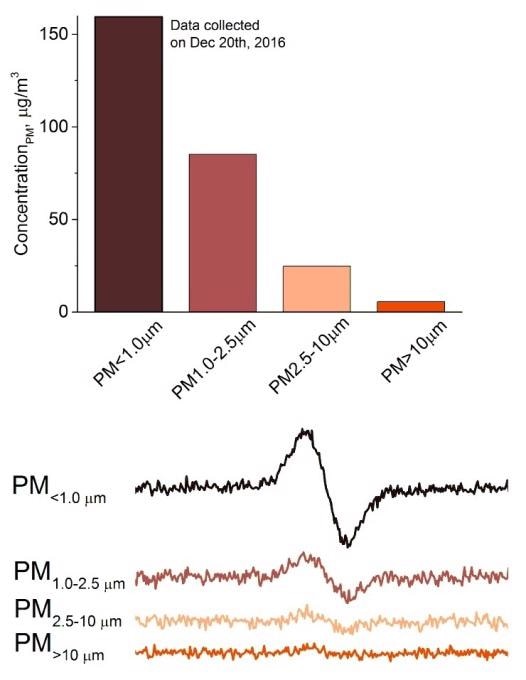A method which detects species that have unpaired electrons is electron paramagnetic resonance (EPR) spectroscopy. Many materials have unpaired electrons, including numerous transition metal ions, free radicals, and defects in materials.
Often, free radicals are short-lived, but play important parts in significant processes such as catalysis, photosynthesis, polymerization and oxidation. Therefore, the application of EPR spans one of the largest ranges of any major analytical method, from molecular research to quality control in fields as diverse as: structural biology, medical research chemistry, quantum physics, materials science, to name a few.
As EPR data can be gathered in seconds, and the analysis of the data doesn't only supply the identity, but also provides quantitative information about the species being measured, it is a valuable tool for environmental analysis. EPR spectroscopy is a useful tool for environmental research as it is not only utilized to track free radicals, but it is also able to detect toxic metal ions in air, groundwater and soil, and observe their uptake by plants, as discussed in this article.
EPR for Air Pollution
Outdoor air pollution is a major global environmental hazard which is detrimental to human health. The correlation between inhalation of ambient particulate matter (PM) and a number of adverse health effects is extensively documented by toxicological and epidemiological studies.
Some selected free radicals and transition metals are:
- Reactive oxygen and reactive nitrogen species (ROS and RNS) are formed from redox cycling quinoids and polycyclic aromatic hydrocarbons (PAHs) which are part of PM. These short-lived toxic radicals have huge potential for harmful oxidative effects in pulmonary tissue.
- Transition metals (Mn, Fe, Co, Mo, Cu, Cr, V, W) are recognized as crucial PM components inducing hydroxyl radical (•OH) production via Fenton-like reactions. This exhibits that the oxidative potential of PM is an important health-relevant metric.
- Long-lived radicals, known as environmentally persistent free radicals (EPFRs), are also part of ambient PM. They are usually carbon-centered PAH or oxygen-centered semiquinone radicals which encourage the production of ROS. Their half-life ranges from several days to several months and even indefinitely on the internal surface of fine particles.


Due to adverse effects on human health, identifying and monitoring the production of free radicals from ambient particulate matter and establishing their oxidative potential is of huge interest. An EPR study on airborne PM in Beijing during haze events is shown in Figure 1.(1)

Figure 1. EPR study on airborne PM in Beijing during haze events.
The results convey that EPR detects EPFRs which are identified as semiquinone radicals in PM with different particle size and that EPFRs are largely persistent in the PM fraction of dae < 1 μm which are the most hazardous.
The daily monitoring of the EPFRs (spins/g) reveals changes to the environment which can cause long-term effects on human health. This monitoring can be utilized to enact counter measures to decrease health risks to the public.
References
- Yang L. et al., Highly elevated levels and particle-size distributions of environmentally persistent free radicals in haze associated atmosphere, Environ. Sci. Technol. (2017) 51 7936

This information has been sourced, reviewed and adapted from materials provided by Bruker BioSpin - NMR, EPR and Imaging.
For more information on this source, please visit Bruker BioSpin - NMR, EPR and Imaging.